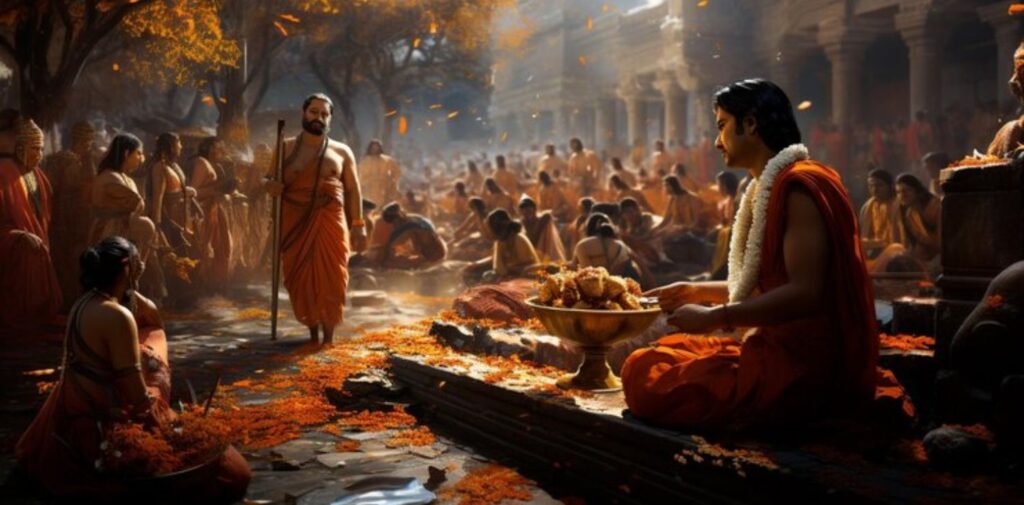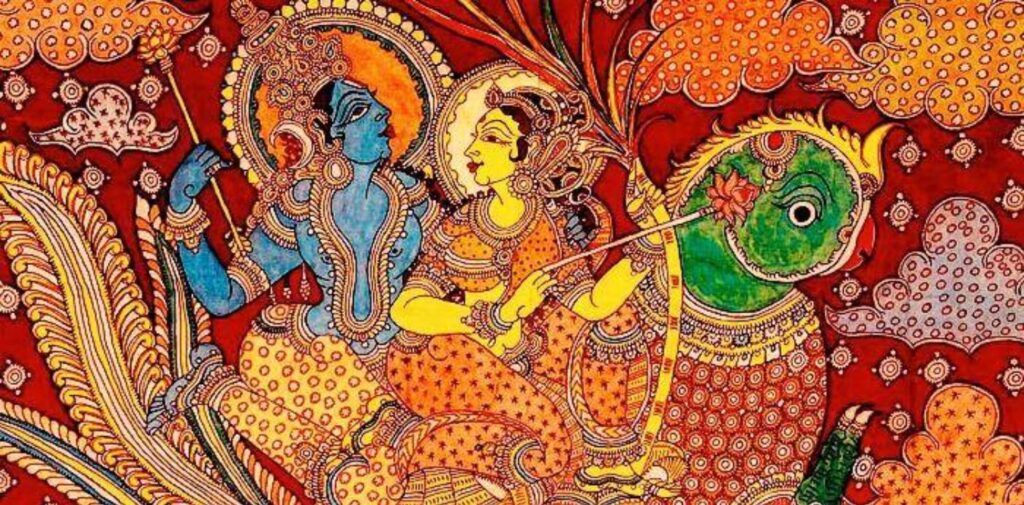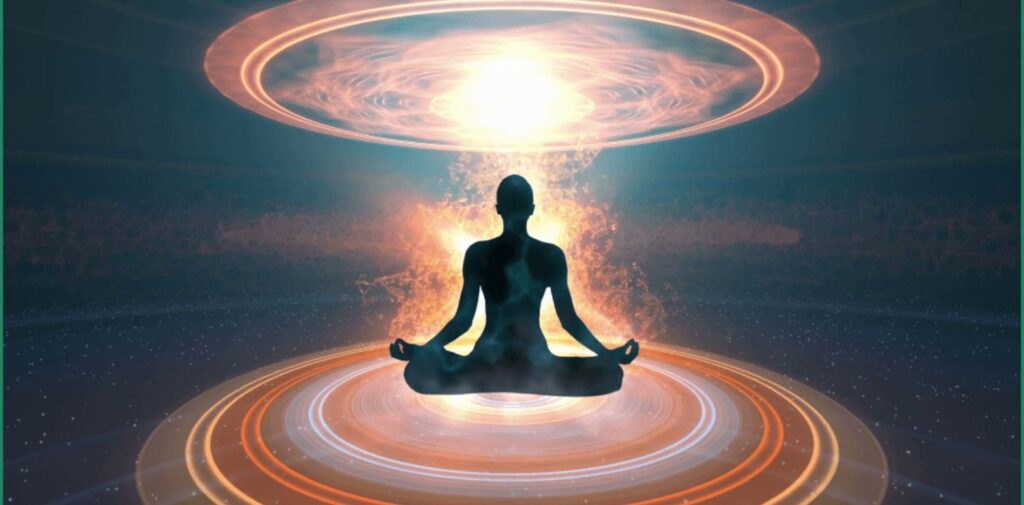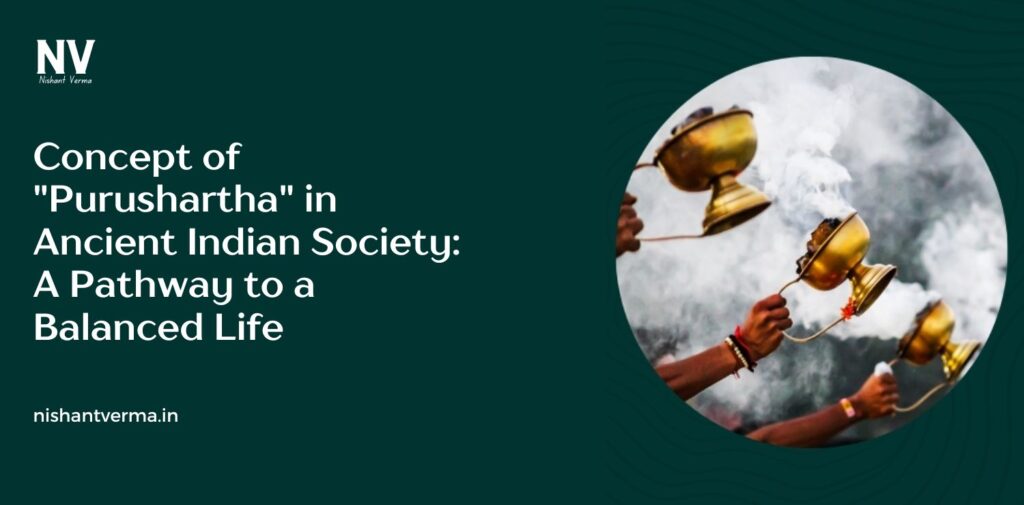In ancient Indian society, life was not viewed simply as a series of random events or an endless pursuit of pleasure. Instead, it was guided by a set of principles that aimed to lead individuals toward a well-rounded, meaningful, and balanced existence. One of the most important concepts that helped shape this balanced approach to life was Purushartha. The term Purushartha can be broken down into two words: Purusha, meaning human being, and Artha, meaning purpose or goal. Together, they represent the four fundamental aims or goals of human life in Hindu philosophy, which are Dharma, Artha, Kama, and Moksha.
These four goals are interrelated and provide a holistic framework for living a fulfilling life. They are meant to guide an individual through different stages of life, ensuring that both material and spiritual needs are met. The idea of Purushartha is not just about personal development, but also about contributing to the welfare of society as a whole. The following is an exploration of these four key principles and their role in shaping the lives of people in ancient Indian society.
1. Dharma: Righteousness and Moral Duty
The first goal of Purushartha is Dharma, which refers to the moral and ethical duties that individuals must follow. Dharma is often described as the path of righteousness and is considered the foundation of a virtuous life. It is not just a set of rules but encompasses a deeper sense of responsibility toward family, society, and the universe.
In ancient India, Dharma was considered the guiding principle of all aspects of life. Whether it was the king, the priest, the warrior, or the common person, each individual had a unique role and set of duties (called Svadharma) based on their age, caste, profession, and circumstances. For instance, the role of a king was to protect the people and uphold justice, while a teacher had the duty to impart knowledge and wisdom. Dharma emphasized living in harmony with nature, upholding justice, and fulfilling one’s responsibilities to family and society.
The concept of Dharma extended beyond personal morality; it also covered social justice and communal well-being. It was believed that by following Dharma, an individual would contribute to the overall harmony of society and the universe. A person who lived according to Dharma would earn respect and live a life of integrity, which would lead to peace, prosperity, and spiritual growth.

2. Artha: Material Prosperity and Success
The second goal of Purushartha is Artha, which refers to the pursuit of material wealth, prosperity, and success. In ancient Indian society, it was recognized that to live a complete and meaningful life, one had to fulfill both spiritual and material needs. While Dharma focused on moral values, Artha was concerned with the resources needed to support life, such as money, food, shelter, and protection.
The importance of Artha in ancient Indian society cannot be understated. Material wealth and success were seen as necessary for sustaining life and fulfilling one’s responsibilities. This included providing for one’s family, contributing to society, and ensuring that the community as a whole could thrive. However, Artha was not seen as an end in itself. The pursuit of wealth and success had to be done in alignment with Dharma—that is, one should never compromise moral values for the sake of wealth. The wealth earned should also be used for the greater good, not just personal enjoyment.
The ancient texts, such as the Arthashastra written by Chanakya, highlight the significance of Artha in building a strong economy and society. This treatise on statecraft, economics, and politics explains how individuals and rulers should work toward the welfare of the state and its citizens by following ethical principles while pursuing material success.

3. Kama: Pleasure and Desires
The third goal of Purushartha is Kama, which refers to the pursuit of pleasure, love, and emotional fulfillment. Unlike the Western concept of hedonism, which often views pleasure as an ultimate goal in itself, Kama in ancient Indian philosophy is balanced with the other Purusharthas, ensuring that desires do not lead to chaos or suffering.
Kama covers all aspects of human enjoyment, including physical pleasures, artistic expression, love, and recreation. It acknowledges the fact that humans have desires, and fulfilling these desires can bring happiness and contentment. This could mean the enjoyment of good food, music, art, relationships, and sensual pleasures. However, just like the pursuit of Artha, the pursuit of Kama must be done ethically and responsibly. Ancient texts such as the Kama Sutra, written by the sage Vatsyayana, emphasize the importance of balance in fulfilling one’s desires while adhering to moral and social norms.
Kama encourages individuals to embrace joy and happiness as an essential part of life. It recognizes that pleasure is not inherently bad but must be experienced in a way that respects others and does not lead to harm. By fulfilling one’s desires in harmony with Dharma and Artha, a person can enjoy a life that is both satisfying and purposeful.
4. Moksha: Liberation and Spiritual Freedom
The final goal of Purushartha is Moksha, which represents liberation from the cycle of birth, death, and rebirth (reincarnation). Moksha is the ultimate spiritual goal in Hindu philosophy, seeking to free the soul from the constraints of material existence and unite it with the divine. While Dharma, Artha, and Kama guide individuals in their worldly lives, Moksha focuses on transcending the material world and attaining eternal peace.
Achieving Moksha requires self-realization and spiritual discipline. It involves the pursuit of knowledge (Jñana), meditation (Dhyana), devotion (Bhakti), and selfless action (Karma Yoga). The journey towards Moksha is considered the highest purpose of human life and is the ultimate goal of spiritual seekers. It is through Moksha that an individual can attain freedom from the cycles of birth and death, achieving a state of blissful oneness with the supreme consciousness or Brahman.
In ancient Indian society, the concept of Moksha was not just an individual pursuit but also a collective goal. Spirituality and self-realization were deeply integrated into the community’s way of life. Temples, gurus, and sages played a vital role in helping individuals seek Moksha through teachings, rituals, and guidance.

Interconnectedness of Purushartha
The four goals of Purushartha are not isolated from one another. They are interconnected, with each one supporting and balancing the others. While Dharma provides the moral compass, Artha ensures that an individual has the means to live and fulfill their responsibilities. Kama acknowledges the natural human desire for pleasure, and Moksha encourages individuals to seek spiritual freedom.
For example, the pursuit of Artha (material wealth) should not come at the cost of Dharma (moral integrity). Similarly, the pursuit of Kama (pleasure) should not lead to excessive indulgence or harm to others. All four goals work together to create a well-rounded and harmonious life, where the material and spiritual aspects are balanced.
Ancient Indian society saw life as a journey of growth, learning, and evolution. The framework of Purushartha allowed individuals to live in a way that was meaningful, ethical, and fulfilling, while also striving for higher spiritual goals.
Conclusion: Concept of Purushartha
The concept of Purushartha in ancient Indian society offers a comprehensive guide to living a balanced and purposeful life. It addresses all aspects of human existence—moral responsibility, material success, pleasure, and spiritual liberation. By following the principles of Dharma, Artha, Kama, and Moksha, individuals could lead lives that were both personally fulfilling and beneficial to society. The Purushartha framework not only provided a roadmap for achieving personal success but also encouraged individuals to contribute to the greater good, ensuring harmony and prosperity for all. Even today, the teachings of Purushartha continue to offer valuable insights into how to live a meaningful and well-rounded life.




